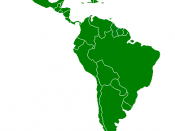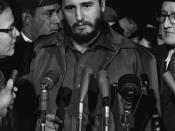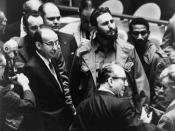Summarize the various forms of protest to the expansion of capitalism. You should examine the environmental, feminist, peasant, labor, minority, indigenous, and religious protest.
What were the motivations or reasons given for protest? Are they linked to economic conditions?
Oftentimes, religious groups play a role in addressing social and economic problems. How have they been involved in your country?
In 1961 Castro formally embraced Marxism, the political philosophy that forms the basis for Communism. Marxist theory states that capitalism and the middle-class society it supported would be replaced by a society in which the working class would enjoy the same material wealth and political power as the middle and upper classes. A centrally controlled economy would replace private enterprise, and the state would guarantee health care, education, retirement, child care, and employment. Cuba has been governed according to socialist economic and political principles, with a centralized economy and a government under the control of the Cuban Communist Party.
Individual freedoms were sacrificed for the social advancement of all Cubans. In addition, religion was discouraged, although not forbidden, so that the allegiance of citizens would belong solely to the state. However, Cuban socialism could not and did not directly mimic the Soviet model because Cuban history and culture were entirely different from Eastern European nations and cultures. Governing offices and agencies were similar, but Castro personally retained ultimate control over the Communist Party, all governing bodies, and the military.
The largest class was the peasants, who could barely support their families on the small plots of land they farmed. At the opposite end of the social scale was the handful of sugar mill owners, who enjoyed all the advantages of great wealth. Unlike most other Latin American countries, however, Cuba had a substantial middle class of lawyers, doctors, social workers,


